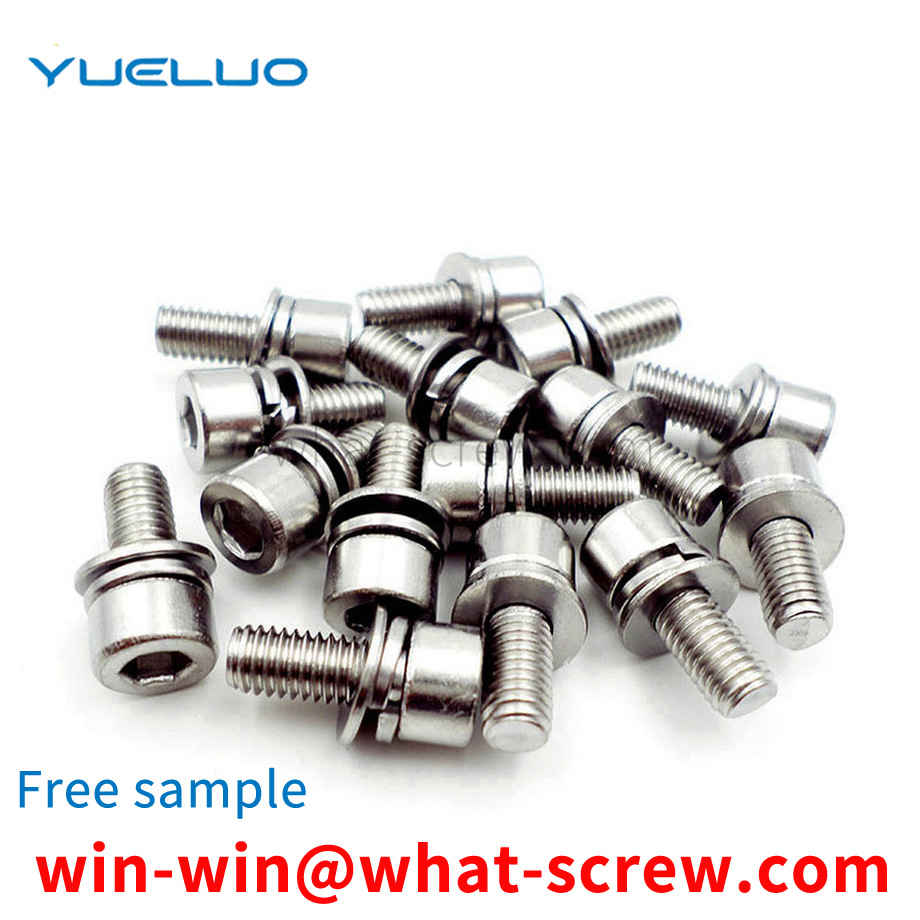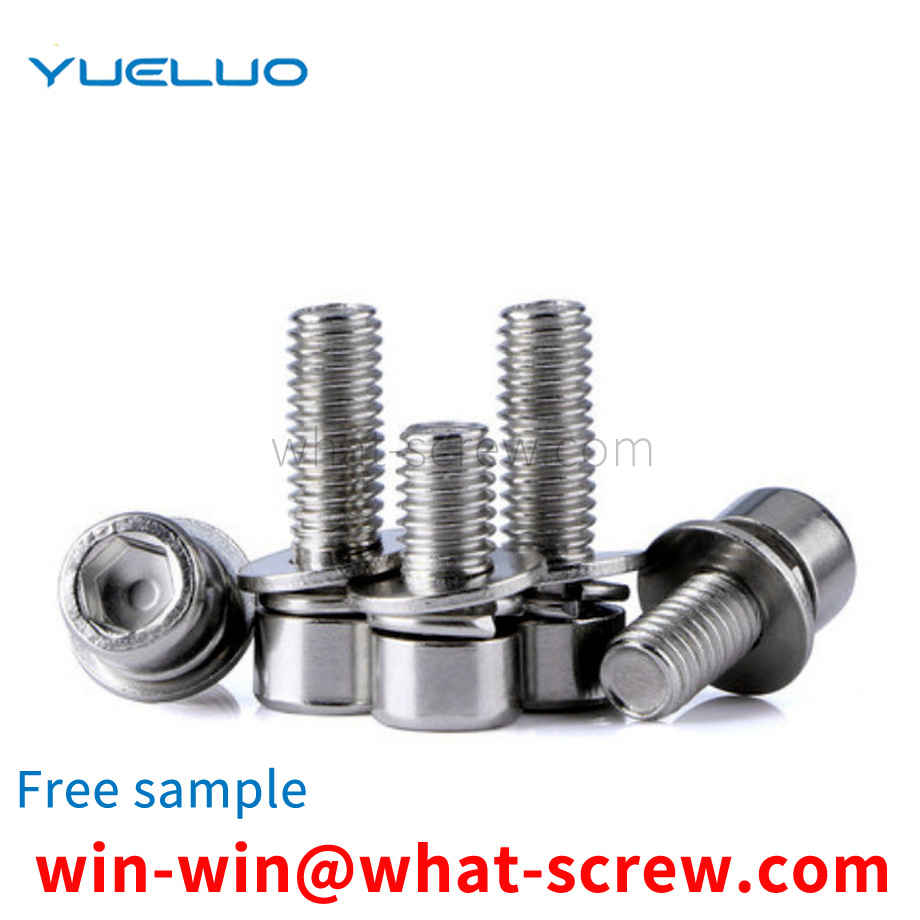screw can be equipped with only one spring washer or only one flat washer, or it can also only be equipped with a two-piece combination of flower teeth. The national standard number of the combination screw is represented by GB9074. The commonly used cross recessed small pan head three combination screw national standard is GB9074.8.
The pin body of the cylindrical pin is generally provided with one or two fixing holes for inserting the split pin to realize the positioning of the pin body. The fixing hole is drilled by a drilling machine, because the drill bit is easy to slip when drilling on the cylinder, and it needs to be processed by tooling. When machining the fixed holes on the cylindrical pins, because the cylindrical pins have many specifications and different thicknesses, even the positions of the holes required to be machined on the same cylindrical pin body are not the same, resulting in various drilling tooling for the pin body, resulting in processing costs. High, on-site management is difficult.
How to use, what is a rivet nut? Usually, rivet nuts used inside elevators are used to install some kind of screws when installing various parts on cars or individual boards on aviation. Commonly used places are very important connection parts, so the choice of rivet nut material is very important. How to use the rivet nut? Let's watch it together. Rivet nuts are used in the fixing fields of various metal plates, pipes and other manufacturing industries, and are widely used in the assembly of electromechanical and light industrial products such as automobiles, aviation, railways, refrigeration, elevators, switches, instruments, furniture, and decoration. It is designed to solve the shortcomings of sheet metal, thin-walled pipe welding nut, substrate welding deformation, internal thread taper, etc. It does not require internal thread, welding nut, rivet efficiency, and is easy to use.
The production process of rivet nuts is basically similar to that of other screws. It's just that the screws are punched out with a screw pier, and the nuts are punched out with a nut pier. Introduce the production process of rivet nuts. 1. First, it is necessary to determine what material and material the rivet nut is, so that we can use what material to produce and what material to use. Knowing what materials and materials are used, we can buy screw wires. 2. Determine the size and length of the rivet nut. This is the best way to use a large screw wire. 3. After determining the material, material, size and type, we need to see if it is a commonly used rivet nut. If so, there must be a corresponding mold in the factory. If not, it is non-standard, then we have to order molds. 4. After everything is ready for production, it is necessary to use the nut machine to punch out the shape of the rivet nut, that is, the appearance. 5. After the pier is punched out, use the machine for tapping the nut teeth to tap it. 6. After the thread is tapped, electroplating is performed. The stainless steel rivet nut does not need electroplating, it only needs to be cleaned. If you want to electroplate other colors, you have to take it to a professional electroplating manufacturer for electroplating treatment.
The produced screws, due to unreasonable production aspects, are likely to cause quality problems in the screws. During production, many screw quality problems may be found upon delivery. Let's talk about the quality problems often encountered by screws and the reasons for the quality problems, and finally put forward some solutions. 1. The head of the screw is deformed and the head is crooked. The possible reasons are the poor installation of the first punch of the screw die and the improper adjustment of the machine. 2. The head of the screw is not round. The reason is that the selection of the first punch of the screw mold is improper or the first punch is not full enough. 3. The screw has burrs or burrs. The reason is the poor forming of one punch, mainly caused by too large gap between punch and die hole or too short punch. 4. The screw head is cracked and the screw head is cracked. The reason may be that there is a problem with the quality of the screw wire itself, so before the screw wire is headed, the quality department must check it and use the potion. Especially the stainless steel screw wire, it is necessary to check that it is stainless steel 201 and that is stainless steel 304. It is also possible that a die is used incorrectly (such as a die with a hexagonal washer head for a pan head), and the viscosity of the lubricating oil fails. For the problem of the screw head, you can read the article written by Manager Zhu above - high-strength screw fracture or head crack detection. In this article, some problems encountered by the screw head and how to detect the screw head problem are clearly introduced [4]. The common quality reasons for screws are of course more than the above, this is only part of it. There are other quality issues, then Manager Zhu will talk about it. The above screw quality reasons are for reference. If you encounter these problems, you can try the solutions proposed.
We have many years of experience in the production and sales of screws, nuts, flat washers, etc. The main products are: countersunk head machine screws, various types of automobile casting nuts, GB12617 stainless steel rivets, national standard metric screws and other products, we can provide you with suitable tightening screws. Firmware Solutions.



















 Service Hotline
Service Hotline




